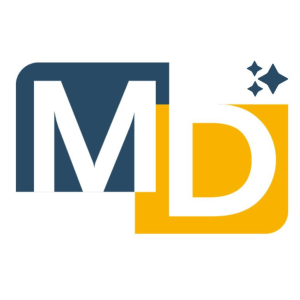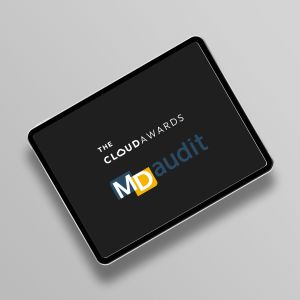Denial mitigation strategies can help billing and revenue teams identify areas of the revenue cycle that need improvement while taking steps to reduce the number of denied claims. Healthcare providers are facing constant challenges in navigating the complex web of payor requirements, coding nuances, and regulatory changes. However, with the right approach and technology tools, denial mitigation can be optimized to achieve higher reimbursement rates and improve overall revenue integrity.
Understanding Denial Mitigation Challenges
Before diving into strategies, it’s essential to recognize the common challenges faced by revenue integrity teams in denial mitigation. These challenges often include:
- Payor Complexity: Dealing with multiple payors, each with unique billing requirements and policies, can lead to confusion and inefficiencies in denial resolution.
- Manual Processes: Relying heavily on manual processes for denial identification, prioritization, and resolution can be time-consuming and prone to errors.
- Lack of Data Insights: Limited visibility into denial trends, root causes, and payor behavior hampers the ability to implement targeted mitigation strategies.
- Resource Constraints: Many healthcare organizations struggle with limited resources, both in terms of staff expertise and technology capabilities, hindering their ability to proactively manage denials.
Addressing these challenges requires a comprehensive approach that combines best practices, advanced technology solutions, and data-driven insights.
Optimizing Denial Mitigation Strategies
Here are eight denial mitigation strategies to leverage along the revenue cycle management (RCM) continuum-
- Prioritization Techniques: Start by prioritizing denials based on their financial impact and likelihood of successful mitigation. Utilize analytics tools to identify high-dollar denials and those with recurring patterns. Focus efforts on resolving denials that have the greatest potential to improve reimbursement rates. Utilizing advanced analytics tools is crucial for prioritizing denials effectively. These tools can categorize denials based on various factors such as dollar amount, denial reason, payor, and frequency. By segmenting denials into high-impact categories (such as high-cost drugs, implants, and complex diagnoses), revenue integrity teams can allocate resources efficiently and focus on resolving denials with the greatest financial impact. Additionally, predictive analytics can help anticipate potential denials based on historical data, allowing proactive measures to prevent denials before they occur.
- Tracking Payor Trends: Stay informed about payor behavior and trends by leveraging data analytics and business intelligence tools. Monitor denial rates, denial reasons, and payor adjudication times to identify patterns and adjust billing strategies accordingly. This proactive approach allows teams to anticipate potential issues and take preventive actions.
- Utilizing Technology: Leverage technology platforms to streamline denial mitigation workflows. These platforms offer features such as denial analytics, automated workflows, and real-time reporting, empowering teams to efficiently manage denials from identification to resolution. SaaS solutions also provide scalability and flexibility, allowing organizations to adapt to changing billing requirements and industry standards.
- Implementing AI and Automation: Harness the power of artificial intelligence (AI) and automation technologies to enhance denial mitigation processes. AI algorithms can analyze vast amounts of data to identify root causes of denials, predict potential denials, and recommend optimal resolution strategies. Automation tools can expedite claim resubmissions, follow-up activities, and appeals, reducing manual effort and speeding up reimbursement cycles.
- Root Cause Analysis: Conducting a thorough root cause analysis is essential for addressing underlying issues contributing to denials. AI-driven algorithms can analyze denial patterns and identify common trends or systemic issues causing denials. For example, if denials are frequently related to incomplete documentation or coding errors, targeted interventions such as provider education programs or automated coding validation tools can be implemented to reduce these issues and improve claim accuracy.
- Real-time Monitoring and Alerts: Implementing real-time monitoring and alerts within a SaaS platform can streamline denial mitigation processes. These features can notify teams instantly about new denials, upcoming appeal deadlines, or payor trends, enabling proactive intervention and timely resolution. Automated alerts can also flag potential denial risks based on predefined criteria, allowing teams to take preemptive actions to mitigate risks and optimize reimbursement rates.
- Revenue Cycle Management (RCM) Cohesion: Cohesiveness in RCM is essential for optimizing workflows and data exchange. Integrating denial analytics, streamlining workflows, and reporting capabilities within the RCM ecosystem enhances visibility and collaboration across revenue cycle functions. Facilitating open communication along RCM provides a comprehensive view of the revenue cycle, enabling data-driven decision-making and performance tracking for all stakeholders involved.
- Continuous Improvement through Feedback Loops: Establishing feedback loops and continuous improvement processes is vital for optimizing denial mitigation strategies over time. Encourage feedback from frontline staff, coding professionals, and billing teams to identify pain points, process bottlenecks, and opportunities for optimization. Regularly review performance metrics and key performance indicators (KPIs), conduct root cause analysis for unresolved denials, and iterate on improvement initiatives to refine denial mitigation processes and enhance overall revenue integrity.
By delving deeper into these aspects of denial mitigation optimization, healthcare organizations can leverage data-driven insights, automation technologies, and strategic interventions to achieve higher reimbursement rates, reduce revenue leakage, and enhance financial performance while maintaining compliance and delivering quality patient care. Here are five actionable takeaways for revenue integrity teams to incorporate into their denial mitigation strategies.
Actionable Tips for Revenue Integrity Teams
- Regularly review denial reports and analyze trends to identify opportunities for process improvements.
- Collaborate closely with coding and HIM professionals to address coding-related denials and ensure accurate claim submissions.
- Develop robust denial prevention strategies by educating staff, implementing best practices, and staying up to date on regulatory changes.
- Ensure reliable communication channels with payors to address denials promptly and resolve issues effectively.
- Continuously monitor KPIs related to denial mitigation, such as denial rates, recovery rates, and days in accounts receivable (AR), to measure success and drive ongoing improvements.
Optimizing denial mitigation strategies requires a holistic approach that combines strategic prioritization, data-driven insights, advanced technology solutions, and proactive management practices. By leveraging SaaS platforms, AI, and automation technologies, healthcare organizations can enhance their denial mitigation workflows, maximize revenue, and achieve healthier bottom lines while maintaining compliance and improving patient care outcomes.
Adopting these best practices and actionable tips will empower revenue integrity teams to navigate the complexities of denial mitigation effectively while driving meaningful financial outcomes. Have questions or want to chat with a subject matter expert on this topic? Contact us and comment “denial mitigation” to continue this conversation.









